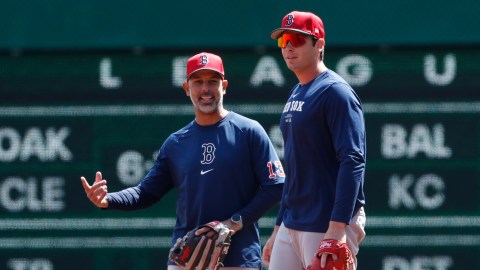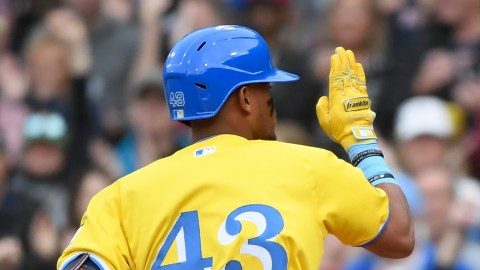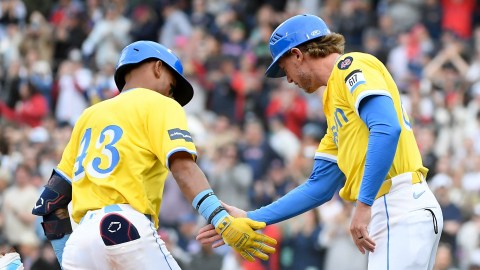Hideki Okajima's 15-pitch outing Sunday afternoon in Seattle was pretty tough to stomach for Red Sox fans.
In truth, his whole season has been.
But can he turn it around? The trends don't point in that direction.
In his breakout season of 2007, Okajima posted a 2.22 ERA, a sub-1 WHIP, was an All Star and received the third most votes among pitchers for AL Rookie of the Year.
Every year since, his numbers have declined. Heading into Monday night's contest against the Angels, his 2010 ERA is 5.81.
It's not abnormal for pitchers to have impressive rookie seasons and then have a drop-off thereafter as batters get acclimated to their tenancies and pitch selections, but Okajima's progression has been different.
Okajima's 2008 and 2009 ERAs of 2.61 and 3.39, respectively, made him a valuable bullpen asset, but they should have worried Red Sox fans going into this season. Still, it would have been hard to predict this comprehensive collapse.
Okajima has added a walk per nine innings from his past marks and subtracted a strikeout. Opponents are batting .351 against him, .396 on balls in play, with a .947 OPS. Basically, he is turning the average hitter into Josh Hamilton.
Why?
Okajima's decline can be attributed to a few factors. Most striking has been his shift from a balanced pitcher to a fly-ball pitcher. In his rookie year, Okajima induced more grounders than flies, which makes sense considering his use of a splitter. In 2010, he allows three flies for every two grounders. His fly ball rate has actually remained steady, but his grounders are now line drives.
The cause of this is likely the loss of his splitter.
Okajima's fastball has lost about 1 MPH since 2007, but his curve has gained one, and his splitter has held steady. The problem is that his splitter has lost a ton of movement — about three inches vertically and horizontally since 2007.
On sunday, as has been the trend in 2010, only his curveball was an effective pitch. His appearance also was indicative of another of his habits, throwing balls out of the zone. Against Seattle, eight of his 15 pitches were not strikes, and of the seven that were, four were hits, two were fouls, and only one was a strike.
He has become a nibbler. For the year, he has thrown only 44 percent of balls in the zone, seven percent below his steady 51 percent number from 2007-09. Even so, batters are making the most contact with his pitches that they ever have, and he has induced fewer swinging strikes than ever (this number was what separated his 2007 performance from subsequent years as it was two percent higher then).
There's not all that much the Sox can do about Okajima's decline. The bullpen isn't all that deep, and Manny Delcarmen and Ramon Ramirez aren't much better right now. Mortgaging the future to get relievers when you're eight games out at the deadline isn't smart either.
We also shouldn't forget how good Okajima can be.
If there is one move that Terry Francona can do, it is to pitch Okajima in fewer important situations. His leverage index, a measure of how significant the situations in which he is being used are, is the highest of his career. This is especially problematic due to his performances with runners on base, in which his minus-6.7 base-out-runs index has declined from plus-22.6 in 2007 (Zero is average).
His reputation as clutch is putting him in situations that he should not be in.
While Daniel Bard is being used in more important situations than is Okajima already, it would be wise for Francona to make that even more true.



